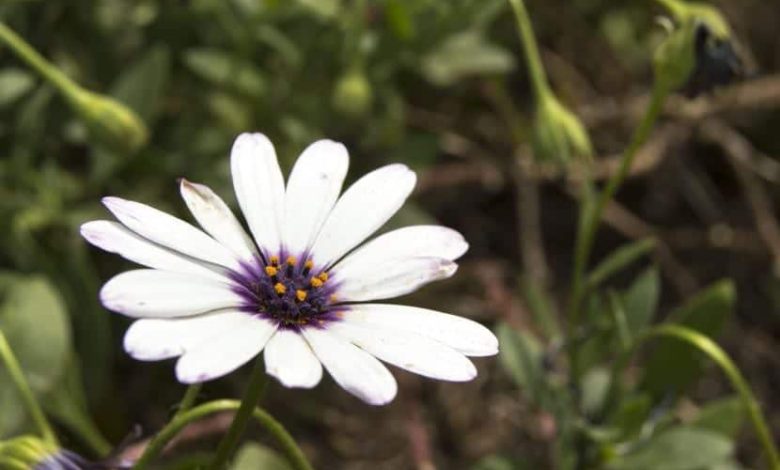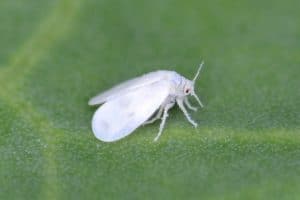Dimorfoteca: [Cultivation, Irrigation, Care, Pests and Diseases]

 The dimorfoteca is one of the species of outdoor plants that are ideal for decorating gardens.
The dimorfoteca is one of the species of outdoor plants that are ideal for decorating gardens.
Its bushy shape, added to the fact that it offers an incomparable flowering, makes it one of the favorites for ornamental themes.
Although they can be located in any area of the garden, it is often used to frame a certain area.
So if you are looking for an excellent option with these conditions, here we will talk about planting the dimorfoteca. Go for it.
Important points when planting dimorfoteca
- When? In summer, transplanting in winter.
- Where? Outdoors, with abundant sunlight.
- How do we prepare the land? With high humidity and the use of natural fertilizers for flowering plants.
- How should we water? During the mornings, without wetting the leaves or the flowers.
- How often do you have to water? 2 or 3 times a week depending on the time of year in question.
- What care do you need? Lots of direct sunlight, fertilization, pruning.
- What pests and diseases does it have? Gray mold and whitefly.
When to sow a dimorfotheca?
The favorite time to place the dimorfoteca seeds and get them to germinate properly is during the summer.However, it is necessary to take care that the transplanting is carried out during the winter since the best conditions will be available for the seedlings to prosper.
On those days, it is best to choose the one with the most favorable temperature (not below zero) and, preferably, with rain.In this way, the ground will be well moistened to generate the best environment.
Where to plant a dimorphotheca?
A space in the garden where it is able to receive enough direct sunlight on a daily basis is ideal for this type of plant. In fact, its greatest and best development is generated when it is in warm environments, but that does not exempt it from performing well in other climates.
It is necessary to verify that it has enough space on the sides and upwards to grow, since its specimens can even reach 60 centimeters in height.
How to prepare the land?
 The humidity level of the ground is the most relevant point to ensure that the dimorphotheque is in perfect condition.
The humidity level of the ground is the most relevant point to ensure that the dimorphotheque is in perfect condition.
Given this reality, it is essential to water the area frequently before planting and maintain an appropriate rhythm in the growth and flowering phases.
The use of natural fertilizers for flowering plants is also well received, but it should be administered according to the recommendations of specialists to avoid nutrient overload.
How do we water the dimorfoteca?
Due to the conditions of the species, the best time to apply irrigation is in the morning, as soon as the sun rises, so that it spends the day well hydrated.
The water should be added directly to the base of the plant without wetting the leaves or flowers to prevent rotting.
How often do we water the dimorfoteca?
Irrigation should be carried out 2 or 3 times a week depending on the climatic conditions of the area.That is, more times in summer and less in winter.
How to plant a dimorfoteca step by step?
The planting of the dimorfoteca can be done in two ways: cuttings from an existing plant or seeds. Here we will work around the seeds.
- Prepare a seedbed with garden soil that is well moistened. It is important to ensure that the soil has a good level of drainage. If not, it can be mixed with an element that contributes in this sense, such as coconut fiber.
- Place the seeds by covering them with a small layer of soil on top . It is not necessary to bury them deep because otherwise they will lose access to the oxygen that is needed to germinate.
- The seedbed should be placed in a space with a pleasant temperature , preferably around 20°C. If you have that temperature naturally outside, you can leave it there and receive indirect sunlight. In case it is very hot, it is best to place it inside and allow it to receive some sun through a window.
- Moisten the seedbed daily to maintain the good initial moisture level. Dimorphotheca seeds should take about 20 days to germinate and show their first seedling.
- Transplant the seedlings after 4 weeks of being in the nursery to the final place in the garden. It is important to choose a place that is well sunny.
What care does the dimorfoteca need?
 The main care that this plant needs is to enjoy sunlight for as long as possible.
The main care that this plant needs is to enjoy sunlight for as long as possible.
For the topic of nutrition, it is advisable to use fertilizers for flowering plants , but homemade ones, such as compost, are also feasible.
On summer days you can prevent the loss of moisture from the ground by adding a layer of mulch to the base of the plant.Pruning is necessary to preserve the good conditions of the bush, but it should be done after it has completed its flowering process.
This pruning should include leaves, branches, buds and any other part that is damaged.
What pests and diseases affect the dimorfoteca?
 The resistance of the dimorfoteca reduces the concern of attacks by pests or diseases of any kind.
The resistance of the dimorfoteca reduces the concern of attacks by pests or diseases of any kind.
However, in very specific cases it has been observed that gray mold is capable of wreaking havoc on a bush that has grown well.
To deal with the disease, it is best to cut the parts that are affected very carefully and thoroughly disinfect the tools used.
Another case occurs with the white fly, which is capable of generating bites in some areas of the plant, leading to its weakening.Due to the type of flowers of this species, it is more or less common for it to be surrounded by insects and other pollinating animals.
But, in general, they do not exert greater damage on its structure as is the case with pests.One of the most striking characteristics of the dimorphotheca is that it acquires greater resistance as it spends more time in the garden.
Therefore, although it is capable of generating an annual flowering, it is a rather perennial plant species.





![Photo of Mother-in-law’s Seat: [Cultivation, Irrigation, Care, Pests and Diseases]](https://www.complete-gardening.com/wp-content/uploads/2022/08/mother-in-laws-seat-cultivation-irrigation-care-pests-and-diseases-390x220.jpg)


